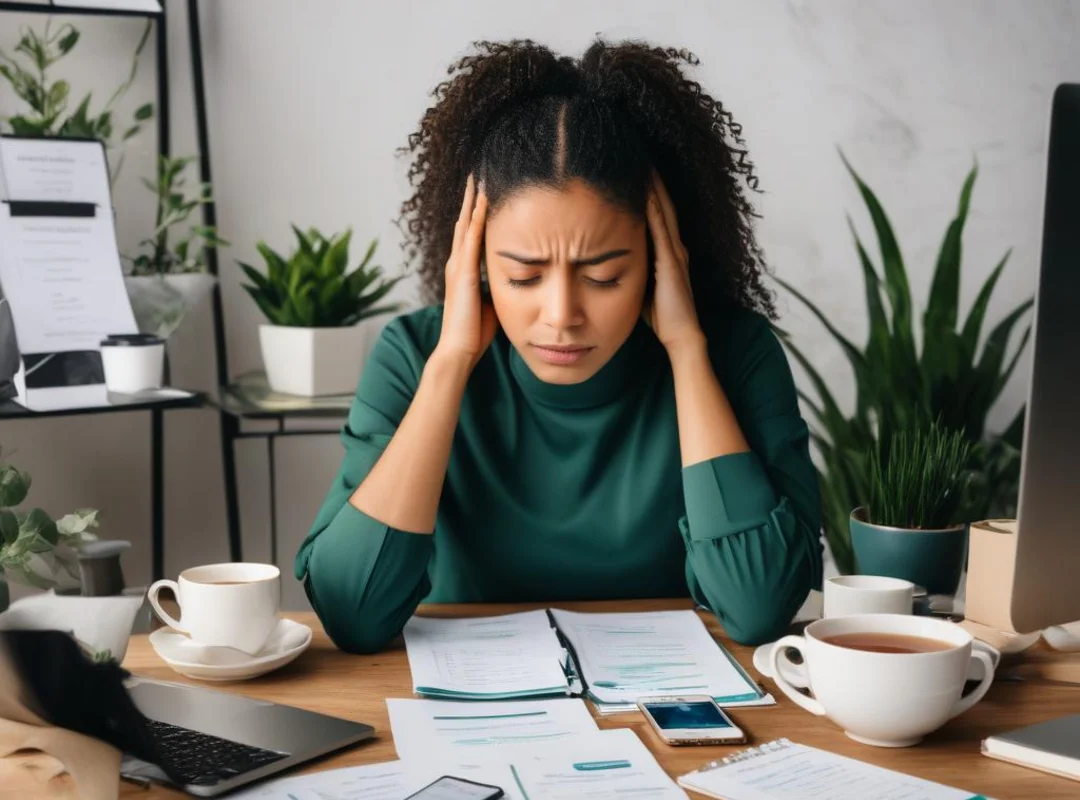Anxiety is on the rise globally, with modern life presenting a unique set of challenges to our mental health. The fast-paced, technologically driven world we live in today has brought about a host of new stressors and pressures that are taking a toll on our psychological well-being. From the constant connectivity and information overload to the pressures of social media and the blurring of work-life boundaries, it’s no wonder that anxiety disorders are becoming increasingly prevalent.
The numbers speak for themselves. According to the World Health Organization, an estimated 264 million people worldwide suffer from anxiety disorders, making it the most common mental health issue globally. In the United States alone, the Anxiety and Depression Association of America reports that over 40 million adults, or nearly one in five people, are affected by anxiety each year. And it’s not just adults; anxiety disorders are also the most common mental illness among teenagers and young adults, affecting 25.1% and 20.6% of this population, respectively.
So, what is driving this anxiety epidemic? Undoubtedly, the relentless pace of modern life plays a significant role. We are constantly connected to an onslaught of information, with 24-hour news cycles, social media feeds, and the expectation of immediate responses to emails and messages. This constant stimulation can overload our senses and leave us feeling overwhelmed and stressed.
The pressure to stay constantly connected and the fear of missing out, or FOMO, can also contribute to rising anxiety levels. Social media, while offering many benefits, can also present a distorted view of reality, leading to feelings of inadequacy and the sense that we are not measuring up. The curated highlights reels of others’ lives can make us feel like we are falling short, whether regarding career success, social lives, or physical appearances.
Another factor is the increasingly blurred lines between work and personal life. With remote work and technology allowing us to stay constantly connected to our jobs, it can be challenging to set boundaries and switch off. The result is that we are always ‘on,’ never fully able to relax and unwind, which can contribute to a heightened state of anxiety.
The physical demands of modern life also play a part. With many of us spending long hours sitting at desks or staring at screens, our bodies are subjected to prolonged periods of physical stress, which can have a detrimental effect on our mental health. This sedentary lifestyle can lead to increased muscle tension, headaches, and fatigue, all of which can contribute to feelings of anxiety and depression.
Then there is the impact of financial pressures and job insecurity, which have only intensified in the wake of the recent global economic crises and the COVID-19 pandemic. Financial stress is a significant contributor to anxiety, and with economic uncertainty becoming the new normal, it’s no surprise that more people are experiencing heightened worry and fear about their financial future.
To address this anxiety epidemic, it is crucial to recognize the signs and symptoms and understand when to seek help. While anxiety disorders are highly treatable, many people suffer in silence, often due to the stigma surrounding mental illness. Breaking down this stigma and encouraging open dialogue about mental health is essential to ensuring that people feel empowered to seek support.
This includes promoting self-care practices and stress management strategies, such as regular exercise, mindfulness, and setting healthy boundaries with technology. By incorporating these practices into our daily lives, we can better equip ourselves to manage the unique challenges of modern life and foster greater resilience in the face of anxiety-provoking situations.
Additionally, fostering meaningful connections and a sense of community is vital. While technology has the potential to isolate us, it can also be a powerful tool for bringing people together. By leveraging online platforms to create safe, supportive communities and encouraging face-to-face interactions, we can help combat feelings of isolation and provide a sense of belonging, which is essential for maintaining mental well-being.
Seeking professional help is also crucial. Therapy and counseling can provide valuable tools and strategies for managing anxiety and improving overall mental health. It is important to remember that asking for help is a sign of strength, and taking that first step can be the start of a journey towards healing and a more fulfilling life.
The anxiety epidemic is a real and pressing issue in modern times. By recognizing the impact of our fast-paced, technology-driven lives and understanding the factors contributing to this rise in anxiety disorders, we can begin to address this problem effectively. Through self-care, stress management, building connections, and seeking professional support when needed, we can equip ourselves with the tools necessary to navigate the challenges of modern life and foster greater mental resilience and well-being.


